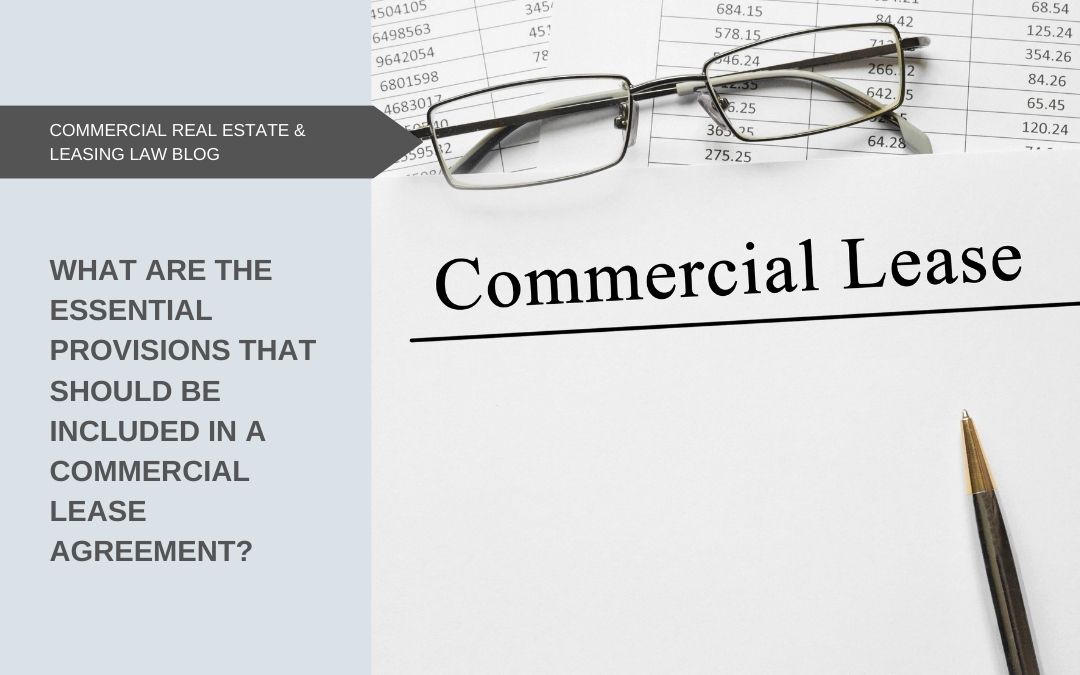A commercial lease agreement should include several essential provisions that address the rights, obligations, and expectations of both the landlord and the tenant. While specific provisions may vary depending on the nature of the commercial property and the parties involved, here are some key provisions that should be included in a commercial lease agreement:
Parties and Property Details
Clearly identify the names and contact information of both the landlord and the tenant.
Provide a detailed description of the leased property, including the address, unit number, and any specific areas or amenities included.
Lease Term and Renewal
Specify the lease term, including the start date and end date.
Outline any options for renewal or extension of the lease and the process for exercising those options.
Rent and Payment Terms
Clearly state the amount of rent and how it will be calculated (e.g., monthly, annually).
Specify the due dates for rent payments and any grace periods or late fees.
Detail the acceptable payment methods, such as check, bank transfer, or electronic payment.
Security Deposit
Specify the amount of the security deposit required and the conditions for its refund or application.
Outline the circumstances under which the landlord may deduct from the security deposit, such as unpaid rent or damages to the property.
Use and Restrictions
Clearly state the permitted use of the commercial space and any restrictions or limitations.
Address any specific rules or requirements related to the tenant’s business operations.
Outline any restrictions on subleasing or assigning the lease to another party.
Maintenance and Repairs
Define the responsibilities for maintenance, repairs, and improvements, specifying whether they are the landlord’s or tenant’s obligations.
Address how maintenance costs will be allocated, including common area maintenance (CAM) charges if applicable.
Insurance and Liability
Specify the types and minimum coverage amounts of insurance required for the tenant, such as general liability insurance.
Outline the respective responsibilities of the landlord and the tenant for property damage, liability claims, or personal injury.
Default and Remedies
Detail the consequences of default, including any cure periods and the remedies available to the non-breaching party.
Specify the process for eviction, termination, or legal action in the event of a significant breach.
Alterations and Improvements
Address whether the tenant is permitted to make alterations or improvements to the property, and if so, outline the approval process and restoration requirements.
Dispute Resolution
Specify the preferred method for resolving disputes, such as mediation or arbitration.
Outline the jurisdiction or applicable laws governing the lease agreement.
Termination
Clearly state the conditions and notice periods for terminating the lease by either party, including early termination rights or penalties.
Miscellaneous Provisions
Include any additional provisions specific to the property or the parties’ unique circumstances, such as parking arrangements, signage rights, or exclusivity clauses.
It is important for both landlords and tenants to review and understand all provisions of the lease agreement before signing. Consulting with a real estate attorney experienced in commercial leases can provide valuable guidance to ensure that the agreement accurately reflects the intentions of both parties and protects their interests.

